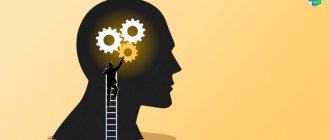Learn more about diseases starting with the letter “A”: Abdominal migraine, Absence, Brain abscess, Abuse headache, Agnosia, Pituitary adenoma, Adrenoleukodystrophy, Acalculia, Akathisia, Alternating syndromes, Amaurotic idiocy, Werdnig-Hoffmann amyotrophy, Kugelberg-Welander amyotrophy, Amnesia, Angioneurosis, Cerebral aneurysms, Anomalies of brain development, Chiari anomaly, Kimerli anomaly, Apallic syndrome.
Acalculia is a neuropsychological symptom that includes a large number of impairments in understanding numbers and performing arithmetic operations. Acalculia occurs against the background of damage to various areas in the cerebral cortex caused by various diseases and pathological conditions.
The disease in people can be expressed in different manifestations: some cannot recognize numbers visually or auditorily, others are not able to understand the meaning of numbers, and still others cannot perform calculations according to the sequence.
This neuropsychological syndrome is identified on the basis of clinical characteristics after examinations by specialists, undergoing a series of diagnostic measures, as well as simple arithmetic testing. Treatment measures are aimed primarily at eliminating the underlying disease. Rehabilitation measures include a set of classes to restore the ability to carry out counting operations.
Causes of the disease
Regardless of the form of acalculia, this pathology is directly related to damage to various areas of the cerebral cortex. The causes of this symptom may be:
- Cerebrovascular pathology. The disease can appear as a consequence of a stroke, as well as with chronic ischemia, which leads to vascular dementia. In both cases, damage to certain areas of the brain occurs, as a result of which this neuropsychological syndrome arises.
- Traumatic brain injuries. Loss of the ability to perform arithmetic operations may be associated with injury, resulting in hematomas. The type of acalculia will depend on the severity of the injury, as well as the affected area.
- Neuroinfections. Acalculia can occur as a complication of a previous brain disease.
- Intoxication. Often the cerebral cortex is affected due to poisoning with toxic substances.
- Neoplasms. Any neoplasm that puts pressure on the cerebral cortex can lead to such disorders.
- Degenerative diseases of the central nervous system. There are a huge number of pathological conditions, as a result of which irreversible changes occur in the cerebral cortex. Unfortunately, many of them are incurable.
In some cases, this pathology occurs even in young children. In children, this disease has a direct connection with intrauterine pathologies of brain development.
General information
The existence of a special counting center in the human brain was described at the beginning of the 19th century. At first, doctors assumed that it was located in the frontal lobe, then they determined its localization at the junction of the parietal and occipital lobes of the dominant hemisphere. In 1926, the German physiologist Hans Berger proposed the term “primary acalculia” to designate counting disorders caused by direct damage to the counting center, to distinguish the pathology from secondary disorders observed due to other cortical dysfunctions. Counting disorders in children are partial and are often the result of underdevelopment of cognitive abilities, therefore in practical neurology they are referred to as “dyscalculia”.
Pathogenesis
Counting is the most complex function of a person’s GNI. The counting center has a very close connection with many other areas of the cortex. Only the joint participation of these zones makes it possible to perform arithmetic operations. If the functioning of one of the zones is disrupted, problems with the account arise.
Due to disease, injury or congenital defects, neurons undergo degenerative changes and sometimes even die. Acalculia develops when areas of the brain responsible for counting functions are involved in the pathological process. Most often, acalculia is not the only disorder in the patient, since the root causes of its appearance also affect other areas of the brain.
Development of the disease in children
At school age, about 5 percent of children suffer from dyscalculia. This is a misunderstanding of the principle of counting, the inability to distinguish between arithmetic operations. Acalculia and dyscalculia are interrelated diseases.
We are talking about acalculia if the child was mentally developed, but lost his ability as a result of injury or disease. With dyscalculia, the child loses the ability to learn any arithmetic operation, and often this is combined with the problem of the inability to recognize letters.
Dyscalculia in children begins to develop from an early age. It is expressed in the fact that it is simply impossible to teach such a child any arithmetic operations. His brain completely refuses to perceive this information. Most often, this disease occurs in children with a genetic predisposition. As a result, the disease develops into mental retardation.
At school age, about 5 percent of children suffer from dyscalculia. This is a misunderstanding of the principle of counting, the inability to distinguish between arithmetic operations. Acalculia and dyscalculia are interrelated diseases.
Classification
It is customary to distinguish two types of acalculia according to the mechanism of occurrence: primary and secondary. Primary appears as a result of the appearance of certain violations in the area responsible for the score.
The secondary form of pathology appears due to damage to other areas involved in arithmetic operations. This type is divided into 4 subspecies:
- optical – people have impairments in number recognition;
- auditory – there are problems with the sound perception of numbers;
- amnestic – disorders affect auditory-verbal memory;
- frontal - a person cannot perform any arithmetic operations.
Symptoms and signs of the disease
Pathology can have one or another manifestation depending on what form it takes. People with the primary form are unable to understand number meanings and cannot perform even simple arithmetic operations.
Secondary acalculia always occurs together with other cognitive disorders. Patients are unable to name the number they see and confuse numbers with similar spellings. Such patients have difficulty remembering. They cannot, even through numerous lessons, learn the numbers from 0 to 10. At the same time, they understand the meaning of the number, are able to perceive them by ear, and can perform simple operations in their minds.
The sensory form of the pathology manifests itself in significant impairments in recognizing the names of numbers by ear. People are not able to understand the speech they hear, while they talk a lot themselves - they mix up words in places, speak unintelligibly, so it is very difficult, and sometimes completely impossible, to understand. In this case, patients can read numbers and understand their meaning.
Acoustic-mnestic is manifested in a violation of the volume of perception of numbers, problems with their memorization. Such people make many mistakes when writing numbers and experience difficulties both in counting and in understanding the number itself.
People with the frontal form of the disease cannot carry out arithmetic operations in the correct order, even if they are very simple and have been shown repeatedly. In this case, a person can count within 10, but cannot add, subtract, multiply, or divide.
Prevention methods
Precautionary measures to prevent dyscalculia can be carried out in early preschool childhood. First of all, the most complete correction of existing neurological pathologies should be carried out. At an early age, you can start learning basic mathematics in a playful way.
Parents should clearly demonstrate to their child how to count objects, shapes and perform basic mathematical tasks, for example, while swimming, you can ask your child to count blue balls or catch three red balls with a net. When teaching a child to count, it is necessary to carefully pronounce the names of numbers, and then arithmetic operations. You can show the number of objects to the child on your fingers or using small toys and objects. Gradually, you need to teach your child to correlate the number of objects with a specific number.
To prevent a child from developing operational dyscalculia, he must be taught the rules of counting and the order of mathematical operations. To prevent verbal and lexical problems, it is necessary to ask the child to say the name of the numbers when counting, and when looking at various figures and other objects - their color and shape. Parents should monitor the correct use of certain symbols and, if their child makes mistakes, calmly correct them, without using harsh punishments.
To prevent the occurrence of dyscalculia in graphic form, it is necessary to pay special attention to the development of the child’s visual memory, fine motor skills, coordination of movements through finger and outdoor games, collecting cut pictures, cubes, puzzles, playing with small parts of the construction set, stringing beads on a cord, identifying them shape and color. The productive activities of children are very effective in this regard - modeling, drawing, appliqué, making crafts, origami
Moms and dads must pay attention to the development of thinking and memory in the child, and then, in the future, the occurrence of dyscalculia can be avoided
Diagnostic methods
Diagnosing acalculia has certain difficulties due to the fact that it always appears against the background of an underlying disease, so it is important to identify the root cause of this neuropsychological syndrome and eliminate it. The following methods can be used to identify acalculia:
- Collecting the entire medical history. At this stage, specialists can find out what caused acalculia and prescribe the necessary treatment based on this.
- Initial examination by a neurologist. At your appointment, the specialist will identify characteristic symptoms, based on which he will determine a possible lesion in the brain.
- Examination by a psychiatrist. Patients with mental pathologies should definitely visit a psychiatrist.
- Arithmetic testing. It is carried out to identify the form of pathology.
- Magnetic resonance imaging, MSCT. They provide the opportunity to accurately visualize disorders in the cerebral cortex.
General characteristics of the violation
The disease is divided into several types, which simplifies the choice of treatment method.
Description
Acalculia and dyscalculia are two different conditions, although they are quite similar in appearance.
In the first case, we are talking about a symptom of the underlying disease, and in the second there is an independent disease. Acalculia was first described by Swedish pathologist F. Henschen. It develops if the part of the brain in which the center responsible for mathematical functions is located is affected. A combination of this condition and sensory aphasia is often observed.
There is also the opposite condition - Savant syndrome, in which a person, on the contrary, has unique, excessively high abilities in mathematics.
Acalculia and dyscalculia: differences
These two disorders, one a symptom and the other an independent pathology, are very similar in external manifestations.
Therefore, without collecting an anamnesis and a general examination, it is not always possible to immediately understand which of them is occurring. In the case of acalculia, treatment will be aimed at eliminating the disease or brain damage that the condition is a manifestation of. Therapy is carried out not only by a speech therapist using exercises, as in the case of dyscalculia, but also by doctors using medications.
Dyscalculia - What kind of disease is this?
Therapy
All therapeutic measures are aimed, first of all, at treating the underlying pathology, which was the impetus for the development of this disease. So, treatment consists of several stages:
- correction of cerebral hemodynamics;
- neurometabolic therapy;
- measures aimed at preventing the development of cerebral edema;
- taking psychotropic drugs.
The goal of all subsequent measures is to eliminate the emerging neurological disorders, including the ability to perform arithmetic operations. This includes:
- Conducting arithmetic classes. There are various techniques aimed at correcting one or another type of acalculia, which have been successfully used for decades. With systematic exercise, most patients experience positive dynamics.
- Psychotherapeutic sessions. They are carried out with the aim of changing the patient’s attitude towards emerging problems, as well as in order to positively set the patient up for further treatment. Due to the fact that the course of treatment is quite long, and sometimes several courses are required, many patients experience depressive states, which in no case should be allowed.
- Classes with a speech therapist. They are not indicated for all patients, but only for those who have been diagnosed with an auditory form of acalculia.
If the disease occurs as a result of a stroke or injury, first of all, all necessary treatment measures are carried out in a hospital setting. Only after a patient in serious condition has been provided with all the necessary medical care and after he is on the mend can rehabilitation measures begin.
Sometimes acalculia occurs in conjunction with one of the chronic diseases, in which case patients are advised to undergo drug therapy along with rehabilitation.
How is dyscalculia corrected?
Correction (treatment) is carried out in a clinic or specialized medical center. The following specialists are involved in this: psychoneurologist, neuropathologist, child psychologist, speech therapist. The main treatment is carried out in a playful way; specialized computer programs and interactive sessions between the child and a specialist can be used.
On average, 30–90 sessions are required to eliminate the problem; in severe cases, their number reaches 250.
Methods and exercises for correction:
- solving problems close to life situations (in a store, in the family, while walking);
- imitation of objects with sticks, matches, buttons and other improvised materials;
- creation by the teacher of diagrams and memos containing an algorithm for completing tasks;
- transition from verbal pronunciation of one’s actions to the internal plan;
- measuring objects with a ruler, determining values by eye, weighing bulk objects, measuring the volume of liquids;
- training in automatic perception of groups of objects up to five pieces, all components of the group must have a different color and size;
- accompanying the solution of problems with a drawing performed by the child.
Various games for young patients suffering from this pathology are aimed at teaching counting and performing basic mathematical operations. The baby is taught to sort objects according to various characteristics. After this, the specialist helps the child master simple mathematical problems and operations. During the training, it is necessary to ensure that the little patient understands the sequence of banal operations and actions he performs. Next, the child is explained how to correctly separate numbers and objects into parts and assemble them into a single whole.
Next, the child learns to correctly use the learned terms and words in everyday life, in conversations with relatives, peers, and friends.
Particular attention must be paid to translating spoken symbols into written form. The child must learn to write numbers and arithmetic signs correctly
Along with the correction of dyscalculia, it is also necessary to develop abstract and logical thinking, visual memory, spatial orientation and musical abilities in the baby. He must learn to independently control his actions and the ability to correctly distribute personal time. Here is an example of several exercises:
To treat this disorder in a child or adult, doctors can prescribe certain medications, such as Glycine, Cortexin and B vitamins. It is doctors, but not speech therapists or speech pathologists (unfortunately, they often prescribe medications, although they do not have the right to do so ).










